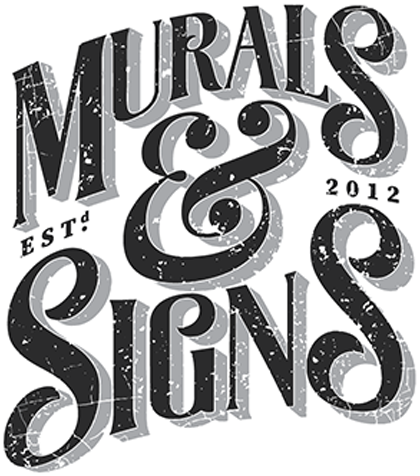The art of sign painting combines creativity and craftsmanship, but safety should always be a top priority. Establishing a safe work environment is essential to protect the well-being of sign painters and ensure the quality of their work. This comprehensive guide explores the key strategies and practices for creating a safe and secure environment for sign painters to unleash their creativity without compromising their safety.
The Importance of a Safe Work Environment
A safe work environment is more than just a legal requirement—it’s a fundamental responsibility that ensures the health and well-being of sign painters.
Preventing Accidents and Injuries
A safe work environment significantly reduces the risk of accidents and injuries. It protects sign painters from hazards associated with paints, equipment, and work conditions.
Enhancing Work Efficiency
When sign painters feel safe and confident in their environment, they can focus on their craft without distractions or worries. This enhances work efficiency and the quality of the final product.
Identifying and Mitigating Hazards
Creating a safe work environment involves identifying potential hazards and taking proactive measures to mitigate them.
Hazard Assessment
Conduct a thorough hazard assessment of the work area. Identify potential risks, such as chemical exposure, electrical hazards, and physical hazards like tripping or falling.
Implementing Safety Procedures
Establish clear safety procedures and guidelines for different aspects of sign painting. This includes proper paint handling, equipment usage, and emergency protocols.
Essential Safety Practices for Sign Painters
A combination of safety practices and precautions ensures a secure environment for sign painters.
Proper Ventilation
Ensure adequate ventilation in the workspace to prevent the buildup of harmful fumes from paints and solvents. Proper ventilation improves air quality and protects the respiratory health of sign painters.
Personal Protective Equipment (PPE)
Mandatory use of PPE is essential. Sign painters should wear appropriate gear such as eye protection (goggles), respiratory protection (masks), gloves, and clothing that covers the skin to prevent chemical exposure.
Ergonomic Considerations
Design workstations and setups to prioritize ergonomics. Properly positioned tables, chairs, and lighting reduce strain and discomfort, minimizing the risk of repetitive stress injuries.
Electrical Safety
If electrical tools are used, ensure that they are in good condition and properly grounded. Avoid overloading electrical outlets and keep cords organized to prevent tripping hazards.
Ladder Safety
When using ladders or scaffolding for elevated work, adhere to ladder safety protocols. Secure ladders properly, maintain three points of contact, and avoid overreaching to prevent falls.
Chemical Handling and Storage
Store paints, solvents, and chemicals in designated areas with proper labels. Follow manufacturer instructions for safe storage and disposal to minimize the risk of chemical exposure.
Training and Education
Proper training and continuous education are key to creating a safety-conscious work environment.
Initial Training
Provide comprehensive training to new sign painters on safety procedures, equipment usage, and hazard identification. Ensure they understand the importance of following safety protocols.
Ongoing Refresher Courses
Regularly conduct refresher courses to reinforce safety practices and introduce any updates or new safety measures. Ongoing education keeps safety at the forefront of sign painters’ minds.
Emergency Response Drills
Regularly conduct emergency response drills to ensure that sign painters are familiar with the correct actions to take in case of accidents, fires, or other emergencies.
Collaboration and Communication
Creating a safe work environment is a collaborative effort that requires open communication and active participation.
Employee Involvement
Encourage sign painters to actively participate in safety discussions, report hazards, and suggest improvements. Their insights can lead to more effective safety measures.
Clear Communication
Display safety guidelines, emergency contact information, and hazard warnings prominently in the workspace. Clear communication ensures that everyone is aware of potential risks.
Compliance with Regulations
Adhering to industry regulations and standards is a non-negotiable aspect of creating a safe work environment.
OSHA Regulations
Familiarize yourself with Occupational Safety and Health Administration (OSHA) regulations that pertain to sign painting. Ensure compliance with standards related to chemicals, equipment, and workplace safety.
Industry Standards
Stay informed about industry-specific safety standards and best practices for sign painting. Incorporate these standards into your safety protocols.
Conclusion
Creating a safe work environment for sign painters is a fundamental responsibility that ensures the well-being of workers and the quality of their work. By preventing accidents, providing proper training, implementing safety practices, and complying with regulations, businesses can foster an environment where sign painters can thrive creatively without compromising their safety. Remember, a safe work environment not only reflects a commitment to ethical practices but also contributes to a positive work culture that values the health and happiness of every individual involved in the art of sign painting.
